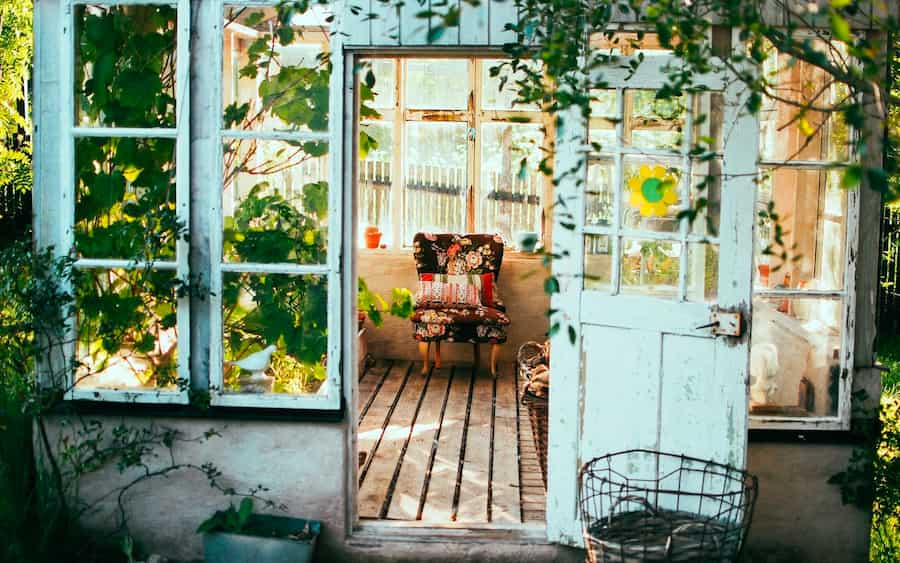Your cart is currently empty!
Increase Your Property’s Value with Gardening
Increasing property value is a major concern not only for those looking to sell immediately but also for those that are hoping to create long-term profits from their land. While many people only think of renovating inside to accomplish this goal, the truth is that landscaping could be the key you’re missing! As one example, trees help sell homes.
The landscaping of a property can have a major effect on property value, often in unexpected ways. Here are eight tips to follow to increase your property value with better gardening and landscaping.
Table of contents
#1: Light It Up
Landscaping isn’t always about plants, lawns, or hedges. In fact, sometimes landscaping is about lighting!
Homeowners aren’t always aware of this, but increasing the amount of outdoor lighting at your property can increase property value because it promotes better curb appeal, increased security, and even a higher degree of safety.
Additionally, lights are great because they can be used to highlight the best parts of your property, such as a favorite bush or tree.
#2: Mature Trees Sell!
The landscaping around many homes is sparse, and this is particularly true of new homes. Planting trees can be a great way to improve curb appeal while also potentially lowering some bills. For example, a well-placed tree will eventually generate shade that will help to reduce cooling costs.
Additionally, home buyers are often looking for homes for mature, well-kept trees. Trees help sell homes. Planting trees early on after moving in is a great long-term investment idea.
#3: Consider A Deck Or Patio
For many homeowners, their yards are best enjoyed from the comfort of a deck or patio. Homes that don’t currently have one of these options will see increased home appraisal values if one is added.
While the process of building and maintaining a deck can be costly, decks tend to bring more value to a property than a simple patio. Of course, the final choice should be made based on location, yard design, and house type.
#4: Think Year-Round
Gardeners must learn how to think in a year-round way. This means that rather than having plants that only look good in July and August when everything is lush and green, there should also be parts of the garden that thrive in other parts of the year.
Does your landscaping have a great year-round design? Where could this design be improved? Adding in these elements will boost curb appeal and ensure great property value no matter when your house hits the market.
#5: Spruce Up The Pathway
Those with a limited amount to spend on improving the landscaping of a property should focus on the path that buyers will take to enter the house. Is the pathway cracked? Is there a pathway at all? Are hedges growing over it?
These are the elements that should be addressed first to ensure that the house has a welcoming entrance for all who come to view it.
#6: Reduce Other Issues
Great landscaping increases property value; bad landscaping can actually decrease it. In some cases, a DIY landscaping project gone wrong can actually lead to other major issues like basement flooding.
Sometimes, however, great landscaping can simply be a great tool for reducing other existing issues. Installing unique features, such as a dry creek bed or a rain garden, can help prevent basement flooding in problem areas while also improving home value. These are common solutions when flooding is a problem, and doing these things can help improve property value.

#7: Make Your Garden Comfortable
If you’re a gardener that loves to be outdoors growing vegetables, flowers, or anything that will sprout, there’s no doubt that much of your space is going to be devoted to this process. Keep in mind, however, that your garden should remain a comfortable, approachable palace to be.
Homebuyers viewing your property might not all be as inclined to see the forest for the trees in the same way that you do. Setting up a comfortable sitting area and helping the space appear intelligent and useful is key to the garden adding to your home’s value.
#8: Consider Low-Maintenance Lawns
Think about what type of lawn is going to attract the most attention on the market in your area. While drought-friendly lawns won’t be necessary for every area, this style is in high demand in some areas. Other regions are seeing a rise in low-maintenance lawns with less grass, more plants, and other eco-friendly solutions.
Consider alternatives to a traditional lawn. Younger buyers are looking for something new, and you could catch their attention with a unique update.
Author
Emila Smith
Related
Share with Family and Friends
Featured Authors
Visit a Botanical Garden For Unique Experiences.
Comments
Logging in to comment gives you more features, but it is not required.
Subscribe
0 Comments
Oldest












